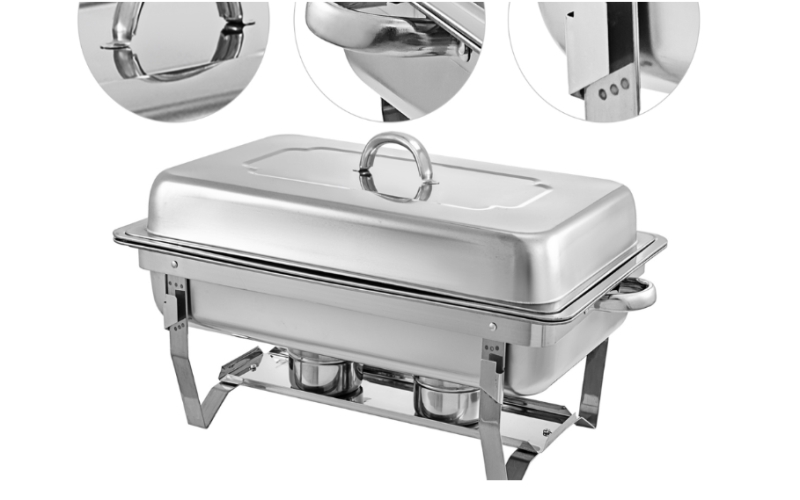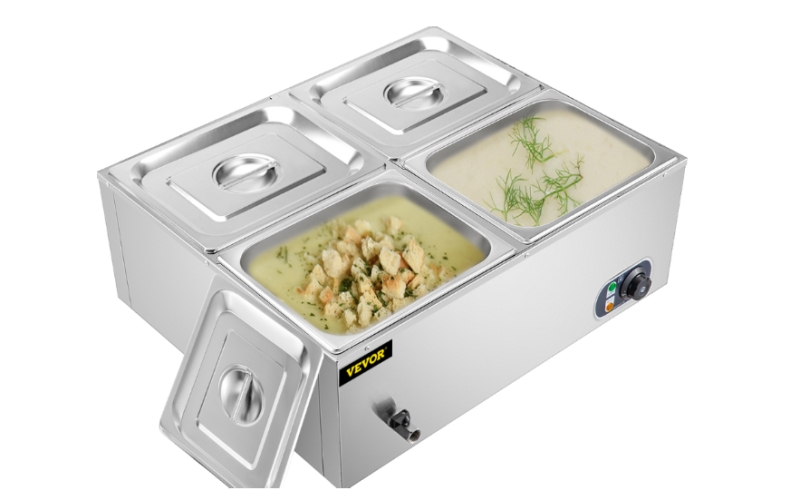Most people don’t find cold food to be appetizing, which is one of the key reasons to keep it warm. At home or any gathering, you wouldn’t want to be served cold food. Microorganisms are more likely to develop on foods as they become cooler, which is the other reason. Cooked rice, vegetables, meat, chicken, fish, dairy products, and tofu are examples of common perishable foods.
In catering, the need for food warming is paramount to delivering a memorable dining experience. Warming ensures that dishes reach guests at the ideal serving temperature, preserving their flavors and textures. It is especially crucial for events with extended service periods, preventing cold or overcooked food. With time catering food warmers are gaining more popularity in the era of restaurants.
Techniques for Keeping Food Warm
Keeping food warm during catering events is a critical aspect of ensuring a positive dining experience for your guests. Whether you’re catering a wedding, corporate event, or family celebration, maintaining the ideal serving temperature contributes to the overall success of the occasion. Here are some techniques to help you keep food warm effectively when catering:
-
Insulated Food Carriers
Hot boxes, also known as insulated food carriers, are invaluable for transporting and holding large quantities of food at the desired temperature. These containers are well-insulated to retain heat, making them ideal for catering events where transportation and distribution are key considerations. Hot boxes come in various sizes and designs, accommodating different types of dishes. Preheat hot boxes before placing hot food inside to maximize heat retention.
-
Heat Lamps
For food to remain at the proper temperature in commercial kitchens and buffet settings, heat lights are needed. These lamps provide radiant heat that warms food without overcooking it. Heat lamps are a common sight in buffet lines and pass-through windows, where they keep food at a perfect temperature until it reaches the customer’s plate. Their efficient design and concentrated heat add to the overall effectiveness of food service.
-
Electric Blanket
While not conventional, electric blankets can be repurposed for food warming in certain scenarios. Their gentle heat distribution and adjustable settings make them suitable for keeping dishes warm during indoor events or small gatherings. By placing dishes on top of the electric blanket, the warmth generated ensures a consistent temperature.
However, it’s essential to use this method cautiously, avoiding direct contact between the electric blanket and food containers. Specialized food warming equipment is recommended for larger-scale or professional food service needs.
-
Warming Trays and Plates
Warming trays or plates with built-in heating elements are excellent for keeping individual portions warm during catering. These electrically powered trays can be preheated and then used to present and maintain the temperature of dishes. Warming trays and plates are indispensable for maintaining the ideal temperature of food during events or gatherings. Warming trays often feature adjustable temperature settings and can be strategically arranged to present appetizers, small bites, or desserts.
-
Chafing Dishes
Chafing dishes play a pivotal role in catering by maintaining food at optimal serving temperatures. Comprising a water pan, food pan, cover, and fuel holders, they utilize indirect heat to keep dishes warm without overcooking.
Their versatility extends to different food types, making them essential for buffet setups, banquets, and catering events. VEVOR chafing dish not only ensures food safety but also contributes to an elegant presentation, enhancing the overall dining experience for guests. Use chafing dish inserts like steam pans to ensure even heat distribution.

-
Oven Warming
When catering on-site with access to an oven, utilizing it as a warming tool is practical. Preheat the oven and use it to keep batches of food warm before serving. Oven warming is a practical technique for keeping food warm during catering. This method is particularly suitable for casseroles, baked dishes, and roasted meats, providing a reliable and straightforward solution to maintain the desired serving temperature.
-
Aluminum Foil
Aluminum foil is a versatile tool for maintaining warmth. Wrap dishes or trays with aluminum foil to trap heat and prevent heat loss. Additionally, insulation materials like thermal blankets or towels can be strategically placed around or on top of food items to enhance heat retention. Use heavy-duty aluminum foil for better insulation. Wrap items tightly to create a sealed environment for heat retention.
-
Candle Warmers or Gel Fuel
Candle warmers and gel fuel cans provide a portable and flameless option for keeping small items warm. These compact devices are suitable for keeping sauces, dips, or individual servings at the desired temperature. Gel fuel cans are a clean and convenient option, emitting a controlled flame that generates heat. Place candle warmers or gel fuel cans underneath small dishes or ramekins.
Sum Up
Effective warming during catering guarantees that each bite is enjoyed as intended, reflecting the caterer’s commitment to culinary excellence. It accommodates diverse menus, from appetizers to main courses and desserts, ensuring a seamless and satisfying dining experience that leaves a lasting positive impression on clients and guests alike.


